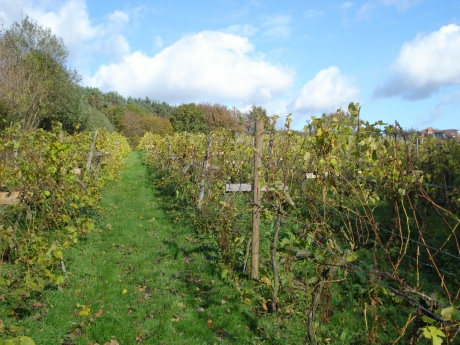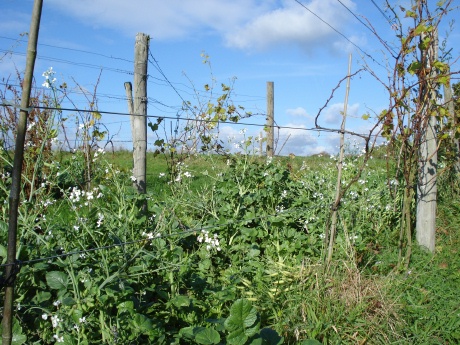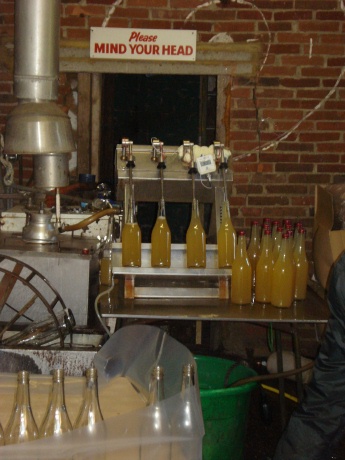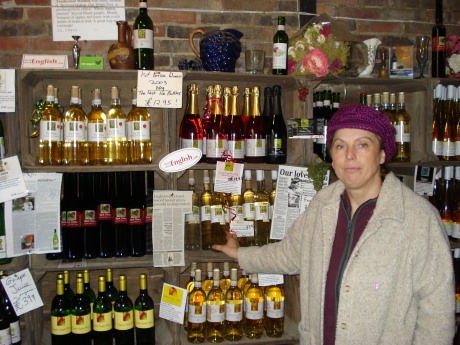Sedlescombe Organic Vineyard
Tuesday, October 30th, 2007
Sat right in the heart of ‘1066 Country’ in East Sussex, the Sedlescombe Vineyard was a beautiful spot on a sunny autumn day. We were there to find out a little more about the English winemaking industry and had arranged to take a tour of the vineyard and have a chat with owner and winemaker Roy Cook and his wife Irma.

Apparently, the vine was first introduced to England by the Romans around 2000 years ago and by Tudor times almost three million bottles of English wine were being produced. However, the dissolution of the monasteries under Henry VIII soon took its toll and English vineyards went into serious decline, with only a handful surviving into the nineteenth century. Luckily, about 40 years ago there was a winemaking revival and production has now reached pre-Henry VIII levels. English vineyards are typically found in the South East but our warmer climate now means that the most northerly vineyard can be found near York!
Roy pioneered organic grape growing in England in 1979 when he created the vineyard with just 2000 plants on one and a half acres. It has now expanded to 23 acres, including two vineyards at Spilstead and Bodiam Castle, and is one of only four organic vineyards in the country. It was his concern about the adverse side effects that agro-chemicals are having on the environment, wildlife habitats, and our health and immune systems that caused Roy to go organic, meaning that all the grapes are grown and processed without the use of synthetic fertilisers, herbicides or systemic disease control sprays. Instead, they use natural farming methods (such as planting wild flower cover crops to manage the soil and protect the vines), which improve soil fertility and benefit the entire eco-system.

Wild flowers next to the vines
They have a number of wine varieties, including Solaris, Regent and Reichensteiner, and produce about 15,000 bottles of wine a year. The grapes are harvested once they have swollen and turned soft and sweet – normally in September or November – but are left on the vine as long as possible to achieve the maximum natural sugar content. One they have been picked, they are crushed and pressed using traditional equipment before yeast is added to provide a slow alcoholic fermentation over 5-12 weeks. The wine is then left to rest until April or May when it is bottled.

Unfortunately, this summer’s terrible weather has been bad news for winemaking and it was not a great a harvest apparently. However, the vineyard also produce their own organic cider and apple juice using locally-grown apples and, luckily, it has been a good year for apples.

Bottling the apple juice on site
For more information about visiting the vineyard and tasting some of their award-winning wine, ring 0800 980 2884 or visit their website. Open every day (10am-5.30pm) April-December. January-March weekends only, noon-5pm.

Irma in their shop.


